Every baker knows the old adage that your baked goods are only as good as the ingredients you use – and that fresh ingredients are a must for the best outcomes.
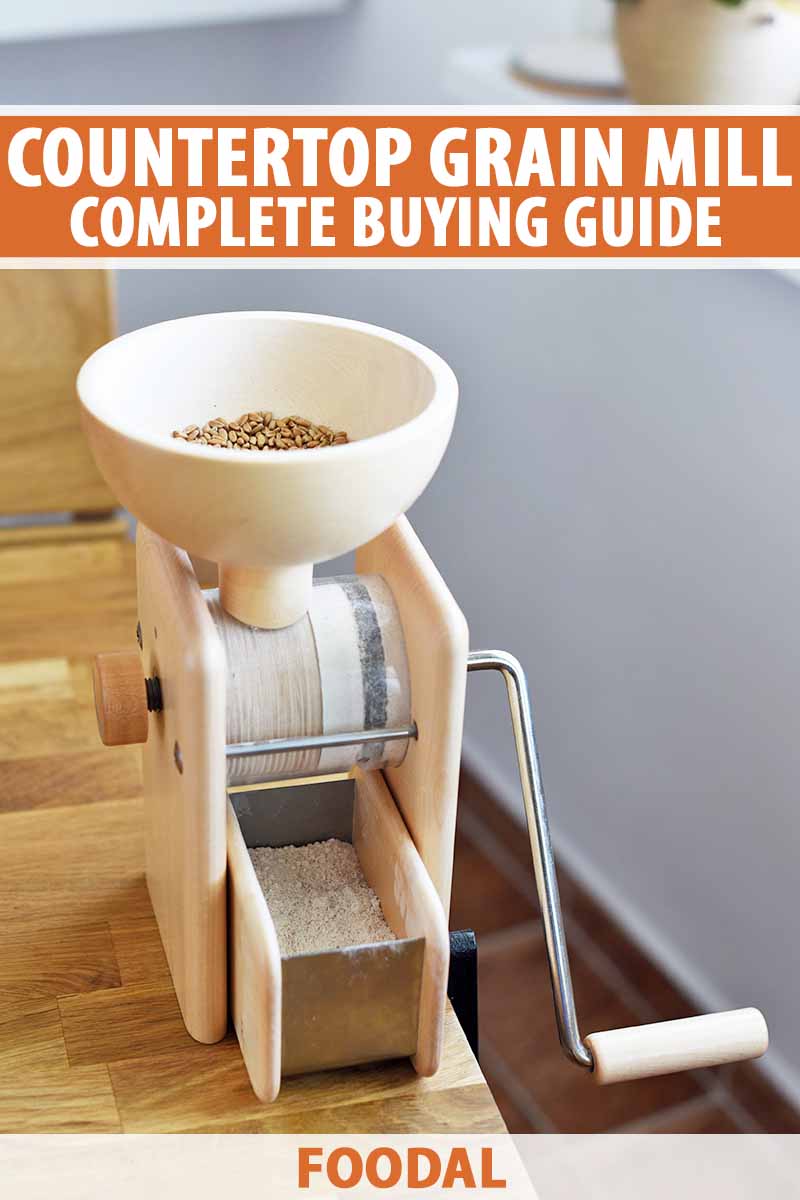
But surprisingly often, one of the primary ingredients that is overlooked in the “quest for fresh” is flour. Unfortunately, what often gets used in home baking is a product that’s been stripped of nutrients and infused with additives for a long shelf life – a far cry from wholesome, mill-fresh quality!
Specialty sections in the grocers and health food stores offer a variety of flours ground from different cereals and legumes, but prices can often be prohibitively expensive, even for small quantities.
There’s no question that freshly ground flour is the most nutritious and flavorful, with several health benefits over refined varieties. Freshly milled has a lively, earthy taste and contains all parts of the seed – the nutrients and fiber of the bran and germ, plus the protein and vitamins of the starchy endosperm.
Milling flour for all of these benefits can easily be done at home with the right kind of kitchen appliance.
Whether you want a model for light, moderate, or heavy use, there’s one suitable for the task. Some look good enough to keep on the kitchen counter, some will need to be attached to the kitchen counter, and all will produce nutritious, whole grain flour.
In this buying guide, we’ll start of with reviews of our top 13 favorite grain mill picks we believe to be worthy of your consideration.
And then we’ll delve a little deeper into the world of grinding your own by exploring various topics, like the benefits of using these appliances, elements of their construction, as well as our advice for buying and storing them.
13 of the Best Countertop Grain Mills
Hand-Cranked Models
Hand-cranked or manual mills require no external energy source, and give a fun, hands-on experience for grinding small amounts of coarse flour.
An excellent choice for emergencies or small-scale everyday use, hand-cranked models need muscle power, endurance, and time to produce fresh flour for home use whenever you need it.
With a slow rotation, they’re much quieter than electric options.
Now let’s have a look at some popular hand-cranked models.
1. Country Living 1136950
Should the powers that be ever release the Furies on us, the Country Living Mill is the grinder we want to have on hand!
Country Living Hand Grain Mill, available from Lehman’s
The strapping, aircraft-quality cast aluminum body, industrial ball bearings, and high-carbon steel burrs mean you’ll never have to worry about this model breaking down when it’s needed most.
The mill is 13.5 inches in height, 12 inches in width, and 9.5 inches in depth. It weighs 16 pounds.
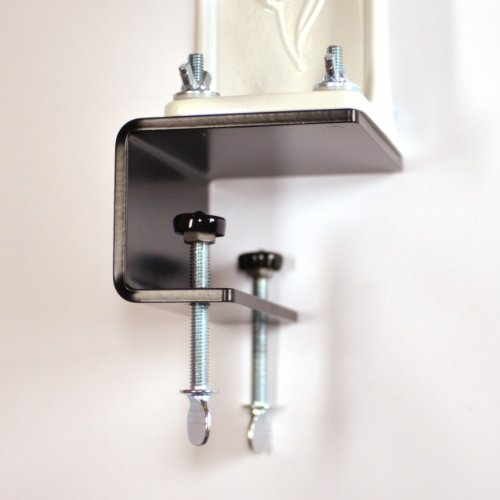
Country Living Grain Mill Clamp, available on Amazon
The Country Living needs to be bolted to a countertop, or you can purchase an optional double-post clamp for portable use.
And for grinding large quantities of flour, you’ll want to consider the complete motorizing kit – powerful and reliable, it grinds at a cool 60 RPM to retain important nutrients.
Country Living Grain Mill Motorization Kit, available on Lehman’s
Features that make this a favorite include:
- Cast iron, V-groove flywheel for smooth, easy cranking
- Extra-large, 5-inch-diameter steel burrs
- FDA-approved, food-grade powder coating
An optional power bar extender makes turning the flywheel even easier – by up to 40 percent!
Made in the USA, it comes with a limited lifetime warranty that covers defects in material and workmanship.
An excellent choice for cracked grains, cereal textures, and fine flour for bread and pastry, this rugged model will last for generations.
Read our complete review or check prices and customer comments on Lehman’s now!
2. Ktaxon 13026033
The Ktaxon hand-cranked grain mill offers an economical way to make fresh and healthy ground products from a variety of dry grains, legumes, and spices as well as nuts and seeds.
The auger, grinding plates, and housing unit are made of rugged cast iron for long-lasting durability, and they have a rust-resistant finish for easy cleanup and longevity.
Ktaxon Hand-Cranked Grain Mill, available on Wayfair
A triangle-head adjusting bolt regulates the disc pressure, altering coarseness to produce a range of textures that include coarse flour, flakes, and cracked grains.
The straight crank is fitted with an ergonomic wood handle for hand comfort and a screw clamp securely fixes the unit to most tabletops – but use a piece of neoprene or rubber placed between the clamp and table to protect finishes if needed.
Use a bristle brush to clean the grinding discs and clean other surfaces with a damp cloth.
The dimensions are approximately 17 inches in height and 5 inches in width and depth. It weighs 7.5 pounds.
The aluminum hopper holds up to four cups of product.
No information is given for the warranty on the Ktaxon website for this specific product. However, Ktaxon does state that the manufacturer of each product is responsible for any warranties related to defects in materials or workmanship for the first 180 days after receiving the product.
If you have any issues, please contact Ktaxon’s customer service team, who will assist you with this process to file a claim with the manufacturer.
Basic and economical, the Ktaxon is a good choice for hand-grinding small amounts of coffee, grains, or even poultry feed.
Find the Ktaxon food mill on Wayfair now.
3. StonePlus
Made of handsome natural granite with an attractive wooden stand, the StonePlus hand-crank food mill effectively grinds coffee, grains, legumes, nuts, seeds, and spices and adds an appealing, rustic touch to any kitchen.

StonePlus Natural Smooth Granite Manual Food Paste Mill, available on Amazon
Granite is a hard, tough stone that gives outstanding durability – and with a smooth, water-polished finish, plate rotation is fluid and easy, evenly pulverizing dry and wet foods to make butters, flours, or milk.
Foods are fed through a chute on the crush cabin roof, which is lined with food-grade stainless steel for clean, rust-free performance.
The plates are moved in a counterclockwise rotation to prevent clogging, and processed foods are expelled into a wide granite trough for easy collection.
A sturdy wooden handle is ergonomically designed for hand comfort and can also be detached for storage.
Wash it down with clean water and dry with a clean, soft cloth.
The StonePlus granite mill comes in three sizes:
- Small – 7.87 by 11.8 inches, weighs 39.7 pounds
- Medium – 8.66 by 13.8 inches, weighs 50.7 pounds
- Large – 9.84 by 15.7 inches, weighs 70.5 pounds
Solid as a rock and thoughtfully designed, the StonePlus food mill delivers flavorful and consistent results when processing dry or wet grains in a striking package – a top choice for hand-cranked models.
All three sizes are available on Amazon. Review prices and check customer comments now.
4. Quaker City
Solid and heavy duty, the Quaker City Grain Mill is beautifully crafted for smooth, easy processing with either a tooth auger for dry grains or a worm auger for oily or wet grains, nuts, and seeds.
The one-piece housing unit and hopper are constructed of solid cast iron with a powder-coated finish, and the augers are made of hardened iron alloy for top-notch clog resistance and long-lasting durability.
Quaker City Grain Mill, available from Lehman’s
Plate to plate clearance is easily altered with a flat head adjustment bolt and produces fine (with a double run) to coarse flours, flakes, and meal.
The large clamp attaches to surfaces up to one and one-half inches thick or can be permanently bolted down. If a counter or table finish needs protection, use a piece of neoprene or rubber as a gasket between the clamp and table surface.
Use a soft bristle brush to clean the auger. Wipe down the housing with a clean, damp cloth and dry with a soft one.
The Quaker City has the following specs:
- Measures 15.75 inches in total height, with a crank that is 9.25 inches in height
- The large hopper holds up to two pounds of beans, corn, or grain
- Total weight is 12 pounds
- Made in the USA
At the time of this article’s publication, we were not able to obtain warranty information. We await a response from the manufacturer regarding this.
A well-made, hand-cranked beauty built to last a lifetime, the Quaker City mill is an excellent choice for producing small amounts of flour or meal for daily use.
You can find the Quaker City mill with a tooth auger (SKU: 1171295) for dry grains or a worm auger (SKU: 1171300) for oily or wet grains at Lehman’s now.
5. Victoria GRN-101
The Victoria Manual Low Hopper Grinder is well-known in the kitchen and home brewery alike.
Victoria Manual Low Hopper Grinder, available on Amazon
Constructed of heavy-duty cast iron, the hopper, body, and clamp are finished with a double layer of electro-plated tin that provides a sanitary, easy to clean surface, and long-lasting durability.
Features of note include the following:
- Adjustable texture screw will grind coarse to medium meal and flour
- Grinding discs are made of white iron for durability
- A single post clamp attaches to standard tables or countertops
- A silicone clamp insert helps to improve tabletop stability and protect surfaces
It measures 12.2 inches in height, 6.1 inches in width, and 5.2 inches in depth, and weighs a total of 9.6 pounds.
The mill comes with a limited lifetime warranty from Victoria, covering craftsmanship defects for life from the date of purchase.
The Victoria is an economical hand mill best suited for grinding dry grains and legumes into coarse meal and flour, but it won’t produce fine pastry flour.
Home brewers love it for grinding barley malt, as well!
Check prices and customer comments on Amazon now.
Electric Models
Electric models require an electrical power source and are best for producing a range of flour textures, including the fine-textured flour that’s needed for baking cakes or pastry and coarser flour that works for breads.
Electric grinders are much faster than manual models, and they do all of the hard work for you! Although they are typically noisier than the hand-cranked options.
Let’s check out a range of recommended electric models.
6. Artudatech
Attractive and sleek, the Artudatech stainless steel electric mill uses high-speed blades to efficiently pulverize dry goods with no vibration and low noise levels.
It can be used on foods such as coffee, corn, legumes, and grains and creates a fine flour that’s suitable for all baking needs, including breads, cakes, and pastries.
Artudatech Stainless Steel Electric Grain Mill, available on Wayfair
The hopper/crush cabin holds up to 10.5 ounces of food. The lid is securely fastened in place with two large clamps.
When finished, the swing design makes it easy to tip the crush cabin contents into a bowl or canister.
Overload protection prevents the unit from overheating and a handy reset switch restores operation.
Hand wash with warm, soapy water and dry with a soft, clean cloth.
The Artudatech has the following fun features:
- Made of sturdy stainless steel with a gleaming polished finish
- The timer can be set for up to five minutes and turns off automatically when finished
It measures 10.34 inches in height, 10 inches in width, and 16 inches in depth, and weighs 11.6 pounds.
The Artudatech comes with a 90-day limited warranty to be free of defects.
Lightweight with a compact design, Artudatech provides an affordable option for occasional or daily use.
Check prices and customer reviews on Wayfair now!
7. KitchenAid Attachment KGM
For those folks that don’t necessarily want a separate appliance for grinding flour, KitchenAid has a milling attachment that fits all of their stand mixers.
KitchenAid All-Metal Grain Mill Attachment, available from KitchenAid
The sturdy body, auger, and front plate are made of cast aluminum, while the movable burr is made of stainless steel. It quickly slips into the hub drive, and texture selection is easy with a turn of the large adjustment knob.
A sound option for KitchenAid users, it features 12 different grind levels, from a very coarse cracked texture to a fine grind.
This attachment works on most non-oily food products such as wheat, oats, rice, corn barley, buckwheat, and millet.
It also includes a cleaning brush.
This attachment measures 8.3 inches in height with a width of 7.8 inches and a depth of 4.5 inches. it weighs 4.4 pounds.
A one-year full warranty is included from the date of purchase to cover any defects in materials and workmanship.
Check prices and customer reviews on KitchenAid and Amazon now.
8. Kitchen Mill 52-601-BHM
Designed for efficient and quick refining, you’ll like what this high-speed electric mill from the Kitchen Mill has to offer!
The micronizer chamber is constructed of surgical stainless steel, while the lid, housing unit, and transparent flour container are made of high-impact Lexan plastic.

The Kitchen Mill’s Electric Grain Mill, available on Amazon
The 1000-watt, 1.8-horsepower motor is powerful and self-lubricating, and the impact grinding heads run cool to maintain important nutrients.
Features of note are:
- Five texture settings refine coarse to very fine flour
- Has a handy ON/OFF switch
- Two filters are designed to trap fine particles, keeping them from blowing into the air
- Grinds up to 1 pound of grain per minute
- The flour container holds 24 cups of flour
- The hopper holds 3 cups of product
The mill weighs only 8 pounds, and measures 10 inches in height, 8.5 inches in width, and 7.75 inches in depth.
Engineered and assembled in the USA, the Kitchen Mill comes with a 5-year warranty to cover any defects.
With a long history in impact milling, the Kitchen Mill brand brought producing whole grain flour into the modern kitchen ever since its first model, created in 1976! Reliable, quick, and convenient, the Kitchen Mill is still a dependable choice today.
Check prices and customer reviews on Amazon now.
9. Mophoto
For heavy-duty grinding in a stout package, the Mophoto electric mill features a tough powder-coated cast iron body and a galvanized steel stand.

Mophoto Electric Grain Mill, available on Amazon
Here are some defining features for you to review:
- Has a grinding capacity of up to 120 pounds per hour
- Draws 3000 watts of power
- Includes two types of grinding discs, for either dry or wet work
The hefty sand discs are intended for use on oily or wet ingredients such as nuts and seeds for butter, or with soaked items like almonds, beans, or rice for grain and nut milks.
The hardened steel discs are for use with dry items like grains, legumes, and spices.
The steel hopper holds up to two pounds of food and a large dial on the disc cap is fingertip adjusted to calibrate the grinding plates, producing a range of textures that includes cereal flakes, cracked grains, and fine to coarse flours.
Use a brush to clean the discs, and wipe down the housing and stand with a clean, damp cloth.
It measures 29 inches in height, 20 inches in width, and 10.5 inches in depth, and weighs 110 pounds.
The Mophoto mill is ideal for processing large amounts of grains with little effort – but this is a noisy, high-speed unit that’s best suited for work in the garage or shed rather than in your home kitchen.
Check prices and read customer comments on Amazon and Wayfair now.
10. NutriMill Classic 760200
The NutriMill Classic is another popular micronizer, and it has recently been redesigned to improve an already impressive performer.
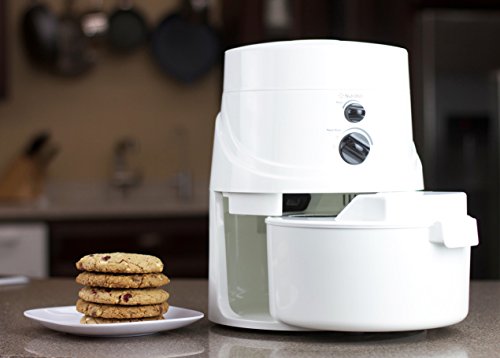
NutriMill Classic High-Speed Grain/Flour Mill, available on Amazon
The stainless steel impact heads can be adjusted to produce coarse meal through to super fine flour for cakes and pastries. And with a robust, 1.8-horsepower, 1200-watt motor, it easily processes up to 5 cups of grain per minute.
Features we like include the following:
- Stainless steel micronizing chamber and fins
- The hopper holds 12 cups of product
- Includes a 20-cup flour canister
- Won’t jam when started with grain in the hopper
- The efficient airflow design keeps flour temperatures at a cool 118°F
- Self-cleaning and dust-free operation
It has a height of 14.5 inches with a depth and width of 12.5 inches and weighs 14.1 pounds.
The NutriMill Classic comes with a 5-year warranty that covers parts and plastics, and a limited lifetime warranty for the motor and milling head. Both warranties cover manufacturing and workmanship defects.
A compact footprint with fast and trouble-free operation rounds out the NutriMill’s profile, making this model an efficient and affordable option for the home.
Check prices and customer comments on Amazon now.
11. NutriMill Harvest 789000
Along with their micronizers, NutriMill makes an electric model called the Harvest that uses hard corundum stone burrs for grinding non-oily grains and legumes.
A large texture-selection knob sits inside the hopper and is easily adjusted to produce a range of textures from cracked grains through to fine pastry flour.
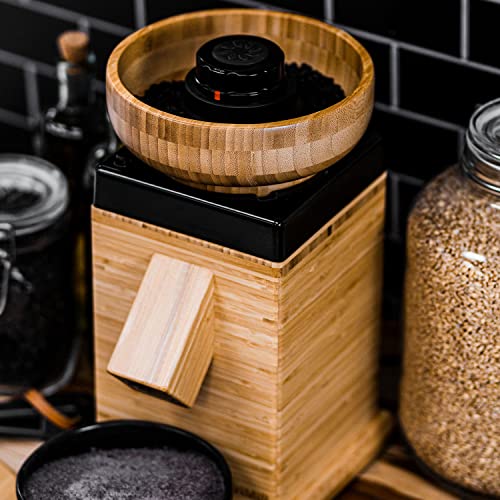
NutriMill Harvest Stone Grain Mill, available on Amazon
The attractive cabinet, flour spout, hopper, and lid are all constructed of eco-friendly and sustainable bamboo, and the durable, hard plastic millstone housing comes in a variety of colors to suit your decor.
Features to consider include:
- A 450-watt motor with an auto-shutoff for thermal protection during use
- Dust-free operation
- The hopper releases with one click to clean the burrs
- UL and CSA certified
- The hopper holds 3.5 cups of grain
It weighs 16 pounds, and measures 13 inches in height and 7 inches in width and depth.
The NutriMill Harvest comes with a limited 5-year warranty to be free of defects in manufacturing and workmanship.
Distinctive, durable, and with a small footprint, the Harvest stone grinder is a cool-running and powerful performer suitable for occasional or daily use.
Read more now on Amazon to check prices and customer reviews.
12. Vitamix Dry Grains Container
The dry grains container from Vitamix is perfect for adding baking tasks to the Vitamix kitchen repertoire, and it can be used to grind whole grains into flour, knead dough, and prepare batters.
Like disc mills that use a counterclockwise rotation to prevent packing, the laser cut, stainless steel blades are designed to create a reverse vortex, pushing ingredients away from the center to avoid binding.
Vitamix Dry Grains Container, available on Vitamix
Made in the USA, the container is constructed of tough and durable, BPA-free Eastman Tritan copolyester and is conveniently marked with cup and ounce measurements.
A sturdy, tight-fitting lid is held securely in place with side clamps and the container’s large spout pours ingredients smoothly in a dripless stream.
Cleanup is fast and easy with warm, soapy water.
The Vitamix container has the following specs:
- It has a capacity of 32 ounces
- The cutting blades measure 2.8 inches
- Weight is 1 pound, 15 ounces
- Height is 9.8 inches
For Vitamix users, the dry grains container adds baking versatility, and it can be used with all full-size Classic C- or G-Series Vitamix blenders.
Vitamix provides a 3-year full warranty for any separately sold container and container components. This covers defects in materials or workmanship.
Review prices and customer comments at Vitamix now.
13. WonderMill 2-0911
This micronizer from WonderMill, available on Amazon, has all the features you’ll need to quickly and efficiently grind dry grains and legumes for flour and meal.
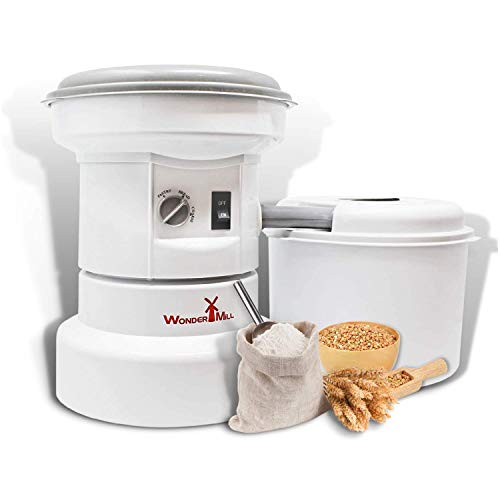
WonderMill Electric Grain Grinder, available on Amazon
With its powerful 1250-watt motor, it can handle 100 pounds of grain per hour without overheating. And the three settings for coarse, bread, and pastry textures produce a consistently-calibrated flour in a single run.
The micronizer chamber is constructed of surgical stainless steel. It is self-cleaning and permanently lubricated for reliable and maintenance-free operation.

WonderMill Small Grains and Bean Attachments Combo, available on Amazon
And if you like to mill beans or small grains, an optional adapter can be used to limit their flow and prevent clogging the hopper.
Some of our favorite features are:
- Virtually dust-free performance
- A 12-cup flour canister is included, with a receiving lid and storage lid
- Food surfaces are made of BPA-free plastic
- UL, CSA, and CE certified
- The generous hopper holds a full 8 cups of grain
It weighs 7.25 pounds. When fully assembled with the flour canister on the side, the entire mill has a height of 12 inches, a depth of 8.5 inches, and a width of 16.3 inches.
It comes with a limited lifetime warranty, covering defects in materials and workmanship.
Quick, clean, and easy to use, the WonderMill is also lightweight with a small storage footprint. Reliably made with quality components, it’s a great option for both the occasional and the dedicated baker!
Read our complete review or check prices and customer comments on Amazon now!
What Are Grain Mills?
A wonderfully simple process, milling flour is one of those good ideas that remains largely unchanged from when our ancestors began with stone pestles some 32,000 years ago.
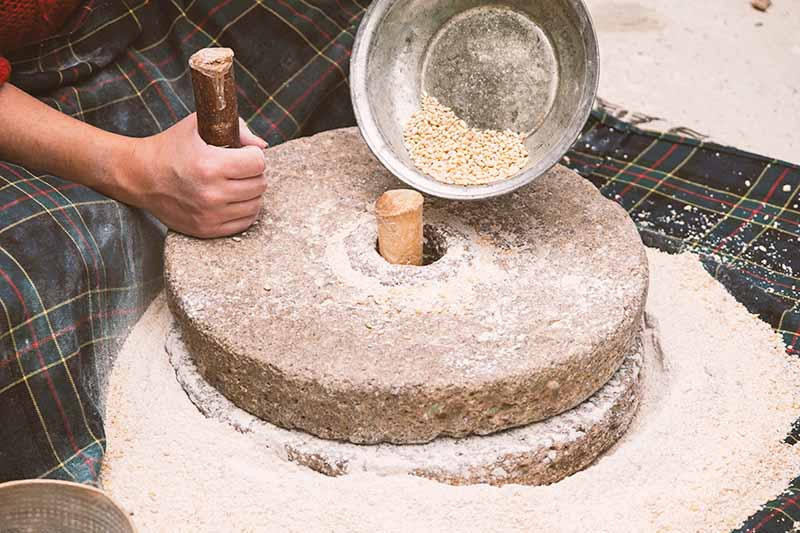
Thankfully, the technology has improved since then, but the basic principle remains the same.
Early models consisted of two hard, smooth stone surfaces grinding against each other to crush and pulverize a variety of kernels into meal or flour.
The grinding surfaces evolved to include a combination of ditches and plateaus known as “furrows” and “lands.” These changes in the surface height mesh to move and channel the kernels and provide the grinding action until the kernels are evenly ground, and finally expelled.
But unlike our predecessors, who experienced excessive tooth wear from burr-stone grit in their flour, today’s mills use modern materials and technology to produce a clean, grit-free product.
Home-Ground Benefits
A valuable benefit of grinding your own is that you have complete control over the end product, provided you have the right equipment!

You can grind as fine or coarse as you like, and will probably end up creating a few of your own “signature blends” using your favorite cereals, legumes, and seeds.
With your own mill, you can feel good about the baked goods you serve your family, secure in the knowledge that your creations are made with wholesome, nutritious flour free of fillers, additives, or preservatives.
We know that eating whole grains has a positive impact in many areas of health including cardiovascular disease, type 2 diabetes, and gastrointestinal health.
But there are many other benefits to grinding your own whole grains, seeds, and legumes as well:
- The price of whole grains can be more economical
- Whole grains last longer in storage than refined flours – though whole grain flours do not
- Home-ground flour is fresher, healthier, and more nutritious because it contains all parts of the kernel – germ, bran, and endosperm
- For even greater nutrient levels, some kernels can be soaked, or “sprouted,” before grinding
- Freshly ground cereals have a sweet, lively flavor that store bought can’t compete with
- Home milling gives you complete control over what ends up in your flour, with no hidden or undesirable additives
- Akin to growing your own veggies, grinding your own flour is a uniquely productive and satisfying experience
- For those that value self-sufficiency, a mill and supply of grain are must-haves
For all of these reasons and more, grinding your own ingredients will prove to be a benefit!
Best Grains for Milling
Most countertop mills can make flour from a wide variety of dry cereals and legumes, and some models will also have the ability to process oily foods such as nuts, seeds, and coffee.

Common cereal grains that make a fine-textured flour include:
- Barley
- Kamut
- Rye
- Spelt
- Wheat
Plus, there are gluten-free choices as well, such as the following:
- Amaranth
- Buckwheat
- Corn
- Oats
- Quinoa
- Rice
- Sorghum
However, it is always recommended that you thoroughly read the instructions and owner’s manual for your purchased appliance to determine which options you can safely mill.
How to Choose a Mill
With the many styles of countertop processors available today, there’s a model for every kitchen – which makes it easy for everyone to enjoy the fresh flavors and complete nutrients of whole grains.
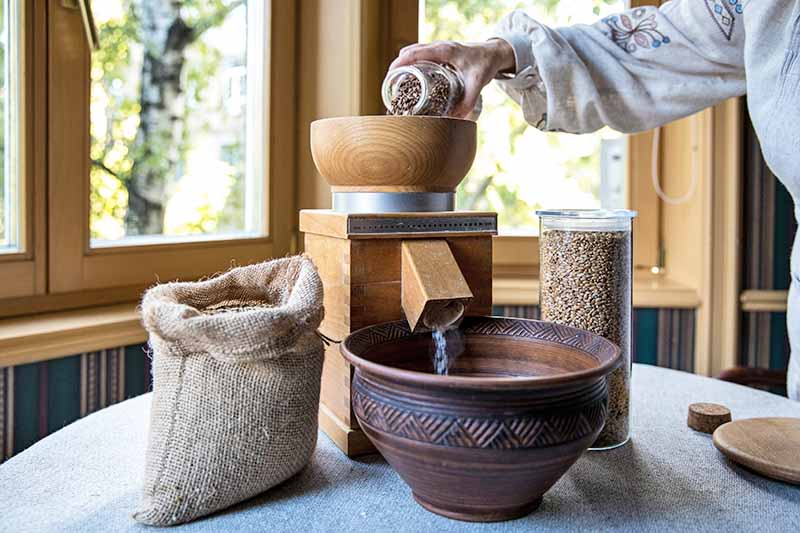
Hand-cranked or electric, mills are basic in their operation. But they do come with different texture settings, processing features, mechanisms, and sizes – some models will even be suitable for small, bootstrap business endeavors.
As with all appliance purchases, your decision will be affected by several factors, including ease of use, convenience, price, quality, and versatility.
To simplify your search, begin with answering the following questions:
- What type of power source do you want to use, manual or electric? Or both?
- What type of burrs and milling mechanism do you desire?
- What foods will you grind – dry, wet, oily, or a combination?
- How often will you use it?
Once you have a clear understanding of your requirements, selecting the features you’d like is a much simpler process.
Here are a few to consider:
Some models can handle the twin tasks of grinding dry grains and fibrous or oily foods like coffee, seeds, and nuts.
However, this is not an option on all models, and often requires changing the burrs and/or using a larger-sized bean auger. If you like the idea of making nut butters as well as flour, check the available features closely to avoid disappointment.
Some high-speed blenders offer these options as well, but be sure to read your manual closely and use the correct grinding settings and tools when milling.
Hopper extensions fit into the top of hoppers and increase their capacity by extending the walls. Handy for processing larger batches, extensions are usually sold separately.
Some models will come with a bowl canister to catch the flour as it’s processed. Look for ones with a secure lid to store the processed flour as well.
And for manual mills, a power bar attachment can make turning a flywheel easier.
Power Sources: Manual, Electric, and Convertible
Milling was first accomplished using muscle power – first human, then beasts of burden were used to move larger stone wheels.
This was followed by water, wind, steam, and most recently, electricity.
Today, many models are still powered manually with a hand crank or flywheel, others by electricity, and some can be converted for a combination of both.
Manual Models
Usually less expensive, manual models require less downtime than their electrified cousins – simply because they don’t have any electrical components to potentially burn out or break down.
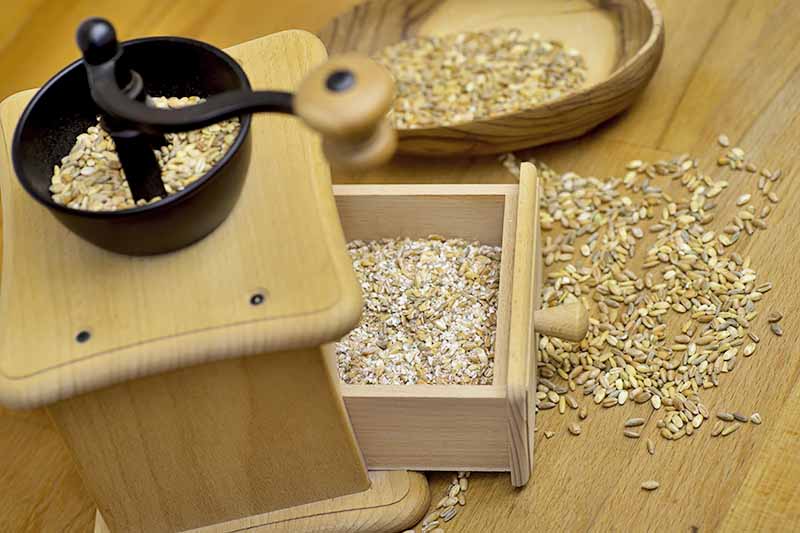
Grains stay cool in manual mode, thanks to the very low RPMs of the hand-powered action, and the slow revolutions also help to keep noise levels down.
Manual grinders also offer a rustic, hands-on experience that you won’t find by flipping on a switch!
Plus, if you live in a rural area with frequent power outages or in an off-grid environment, a manual grinder is a solid option – it will continue to grind whether there’s an outside source of power available or not. Campfire flapjacks made with freshly milled flour sound like a great option to us!
But make no mistake, manual models are labor-intensive and require hard work to produce large batches of flour. And if the hand doesn’t crank the flywheel, there will be no flour to bake the bread!
If you like to multitask, some models even offer a converter kit to hook up to a stationary bike, so you can get a cardio/lower body workout while grinding your flour.
To prevent bucking and unwanted tabletop travel while in use, these models also need to be securely attached to a work surface – either temporarily with clamps, or permanently with nuts and bolts.
Both of these options have their downsides: a permanent fixture can occupy a large area of your countertop, and clamps can cause damage to tabletops and counters.
Texture selection is usually more limited with manual mills, because they often produce only a coarser flour – suitable for breads, but not for cakes or pastries.
Naturally, hand-cranked types grind at a much slower rate than electric models, so patience will be required for a steady supply of flour with these models.
Electric Models
These are the quickest and easiest to operate, and are still relatively inexpensive for the job they do.
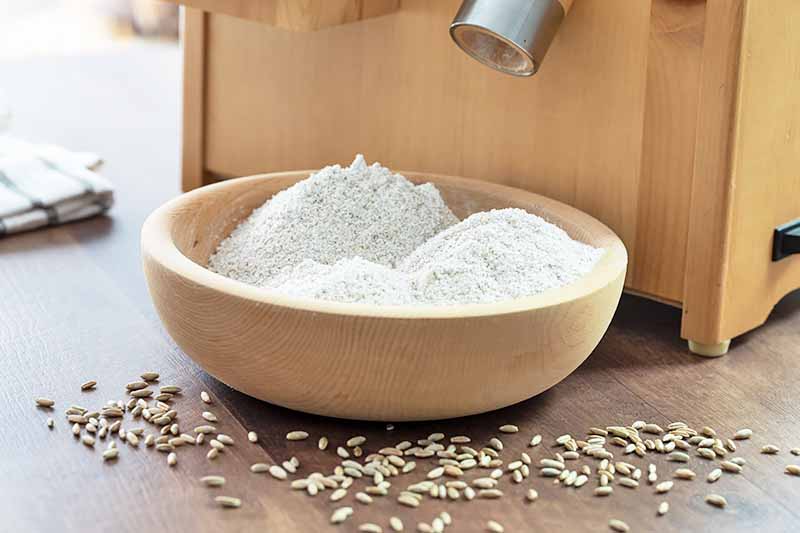
They also have a greater range of texture settings, so you can custom design your own blends specifically for your needs. Most will excel at creating the very fine flour needed for baking puff pastries and cakes with a delicate crumb, as well as coarser flours, meals, and even cereal mixes.
Electric models are also portable. They don’t require any stabilizing anchors, and can be tucked into an out-of-the-way spot when not in use.
However, electric models are quite a bit noisier than hand models, and they’ll generate much more heat in the grinding process.
They also tend to produce more dust than the manual types, because of their much higher speeds.
And, if the power fails, so will your electric grinder. Which brings us to the third option in power sources…
Convertible Models
These mills are a hybrid type that can be converted from manual to electric operation, and back again.
When the power is interrupted, or if you simply want to hand-crank a small batch of flour, a convertible model gives you the option to change power sources – usually with a simple motor attachment.
Not all manual models come with this option. Before purchasing, check the details of your selected model to ensure it can be converted.
Grinding Burrs and Other Mechanisms
Every type of mill has a mechanism of some sort that will burst, crush, grind, shear, or shred grain into meal and flour, producing a variety of textures from coarse to very fine.

Some burrs are more versatile than others, and are able to handle very hard or soft foods, as well as oily or moisture-laden items. Other models offer changeable burrs so you can switch them back and forth for milling dry or oily foods.
One mechanism that’s gaining in popularity is the “oat roller” or “grain flaker,” which produces rolled oats and coarse flakes. However, it’s important to know that this attachment will not grind grain fine enough to be suitable for baking bread or pastries – even after several passes through the hopper.
The two primary mechanisms available for the home market are burr mills and impact grinders.
Burr Mills
The oldest type of grinding mechanisms, these are the most common.
Burrs consist of two grinding plates, made of either stone or steel. One plate is fixed to the housing unit and is called the “bedstone,” while the other plate is rotated and is known as the “runner.”
The product is fed from the hopper between the burrs, where it is then crushed and pulverized as the runner plate turns against the stationary bedstone.
Because the burrs do all the grinding work, you can see why it’s important for these components to be made of high-quality materials.
Stone Burrs
These offer the best possible range of textures, creating very fine flour to coarse meal and cereal textures, as well as cracked grains. And, they’re available in both manual and electric models.
They turn at a relatively slow RPM relative to impact mills, and today’s stone burrs are most often made of engineered composites. These composite stones provide the best performance in terms of longevity, efficiency, and producing evenly calibrated, grit-free flours.
Many stone burrs will have the familiar grooving of furrows and lands that feed and channel the grain, while others will be flat.
Composite, or synthetic stones, work well with all dry grains and legumes, including hard-to-crack varieties like corn.
They’re also suitable for grinding small amounts of dried spices, but shouldn’t be used on wet or oily foods, as the porous material will quickly glaze over.
Composite stone burrs provide a cool grind, produce a clean product free of grit, and have a long life.
Metal Burrs
Burrs made from metal, which may be referred to as plates or discs, can be flat or conical in shape. They are usually made of hardened cast steel – which produces a shearing action on the kernels, as opposed to the crushing motion of stone plates.
Found on both electric and manual models, they’re usually quieter than either stone burrs or impact mills.
The discs or plates are constructed of a hard, tough, high-carbon stainless steel that can handle the most challenging of grinding duties.
Steel burrs won’t chip or flake, and the flour they produce is always free of residual grit. Plus, they won’t glaze over from the oils in seeds and nuts, making them the material of choice for producing nut flours and butters.
And steel plates are also easy to adjust, which helps to keep wear to a minimum.
Impact Mills
Sometimes referred to as a micronizer, impact mechanisms provide high-speed output of the fine and very fine flours best suited for baking breads, cakes, and pastries.
Impact mills are electric only, and in place of burrs, the grinding chamber consists of two stainless steel plates with concentric rings of teeth, or fins. These plates spin at very high RPMs and literally burst the kernels into smaller and smaller pieces as they’re impacted mid-air.
Most micronizers produce fine or very fine flour only. However, some models will have settings for coarser textures such as meal – although they won’t be able to create cracked grains or cereal textures.
Impact models are best suited to use with dry grains and beans, and cannot grind fibrous, oily, or wet foods.
But, because there’s no friction from heat-creating stones or rollers, micronizers maintain a low temperature, which some consider an important feature in maintaining whole grain nutrients.
Running Temperature and Heat Buildup
All models will generate a certain amount of heat in the grinding process.
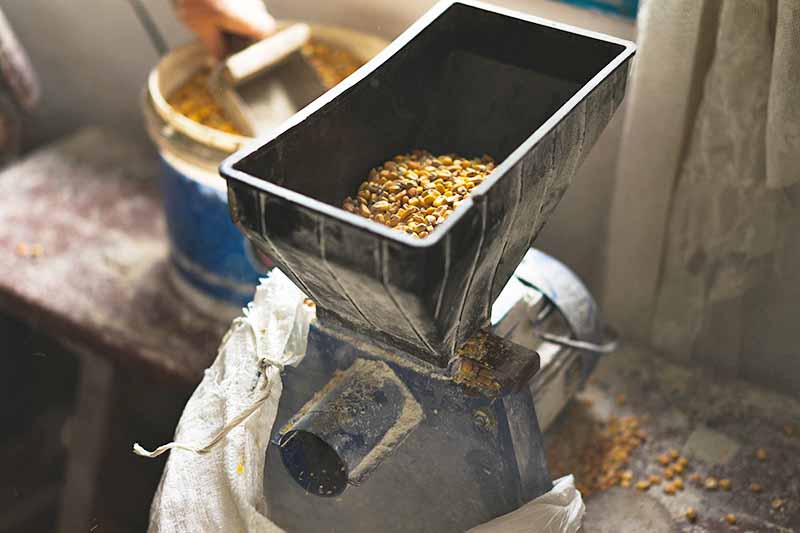
The finer a flour is ground, the more time and energy are required, and the greater the amount of heat that will be generated. Naturally, a hand-cranked model won’t generate as much heat as one that’s fully automated.
We know that high temperatures can cause a loss of certain nutrients in foods. So, the question is, do the temperatures generated in milling cause nutrient damage?
There’s plenty of online speculation that this is the case, but little in the way of scientific evidence to support these claims.
In fact, the AACCI Whole Grains Working Group reviewed in 2015 all of the existing data on the impact of different milling practices on grain nutrition, and concluded that, “The alleged high-temperature destruction of nutrients with steel rollers has not been documented.”
Indeed, the same review reports that the milling process – and the low levels of heat and humidity it generates – have been shown to actually improve the nutritional value of some whole grains.
And any nutrients that might be damaged by heat in the milling process will most certainly be exposed to, and damaged by, the much higher typical baking temperatures of 350°F and higher.
Having said that, if you are concerned about high temperatures, look for air-cooled models that will help to keep the grinding chamber cool, and models with low RPMs. Or simply pop your grain into the freezer for several hours prior to grinding.
Tips for the Freshest Flour
For the freshest taste and highest level of nutrients, keep these points in mind:
- Before they can be used for consumption, all models need an initial run to clean out any small bits of debris left from the machining process. Check your product’s user manual for first-run details.
- Only grind as much as you intend to use in the short term. Once a kernel is cracked and the bran has been exposed to oxygen, oils can quickly turn rancid. This is one of the main reasons why refined white flours have had the oily, but nutritious, bran removed – without the bran oils, shelf life is increased considerably.
- Intact whole kernels, when stored properly, will last longer on the shelf than most types of flour and meal.
- For production purposes, 1 cup of whole wheat berries will produce 1 1/2 cups of flour, and 1 pound of berries gives approximately 3 cups.
- Freshly ground flour should smell slightly sweet or be aroma free. Any oily, dusty, or musty smells indicate the product is past its prime, and should be avoided or discarded.
Grain Storage
As with most dry goods, any wheat berries, kernels, beans, seeds, or nuts should be stored in a cool, dry environment to keep them protected from heat, air, and moisture exposure.

The shelf life for most whole flours and meals is 1 to 3 months when stored properly in a cool and dry place, and 2 to 6 months sealed and kept in the freezer.
In general, whole kernels will keep for up to 6 months in a cool, dry cupboard and up to 1 year in the freezer, according to the Whole Grains Council.
Glass, ceramic, plastic, or metal canisters and bins work well for storage, as do zip-top bags. And any plastic containers should be made of food-safe, BPA-free materials. Several of the products suggested in our tea storage review would make excellent storage vessels for grains and home-milled flours.
An airtight seal is needed for freshness, to prevent exposure to moisture and insects, and to lock out the odors and flavors of other foods.
To track freshness, mark the purchase or mill date on your storage container.
Where to Buy Whole Grains
Whole grains can be purchased from a number of sources, including the bulk section of many grocers, health food stores, local granaries, and a variety of online and mail order sources.

Here are a couple of examples of some of our favorites, all available online:
Palouse Brand Hard Red Winter Wheat Berries from Palouse, Washington are non-GMO, 100% non-irradiated, certified kosher, field traced – meaning they can tell you what specific field it was grown in on the farm – and grown in the USA.
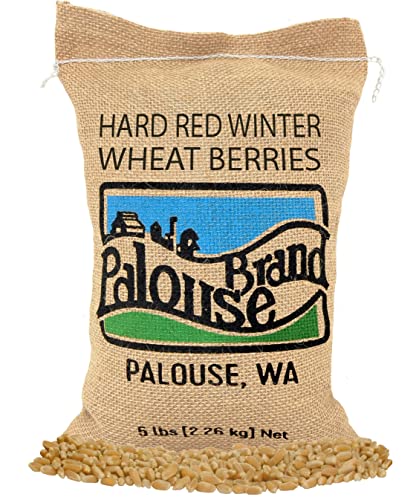
Palouse Brand Hard Red Winter Wheat Berries, 5-pound bag, available on Amazon
Five-pound bags are available on Amazon, as well as 3-pound bags and 25-pound bags.
Augason Farms offers 24-pound pails of various types of dried beans and grains, such as pinto beans, lentils, and long-grain brown rice, available on Amazon.
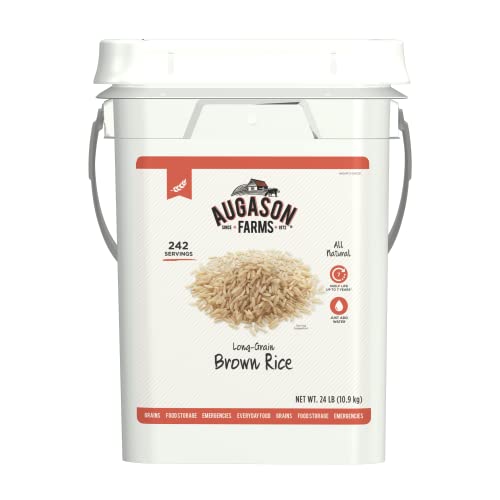
Augason Farms Long-Grain Brown Rice, 24-pound pail, available on Amazon
When unopened based on proper storage conditions, the brown rice from Augason Farms has a shelf-life of up to 7 years, while the pinto beans and lentils have a shelf-life of up to 30 years. Extreme temperatures, as well as constant temperature fluctuations, may deteriorate the quality and minimize the shelf-life.
For best results, Augason Farms recommends storing the containers in a cool and dry place at temperatures between 55°F and 70°F. As long as they are stored correctly, these pantry staples provide smart options for emergency food supplies, or for everyday use!
Mulberry Lane Farms Whole Oat Groats, 5-pound bag, available on Amazon
Organic-certified whole oat groats are available to purchase in a 5-pound bag from Mulberry Lane Farms, which you can buy on Amazon.
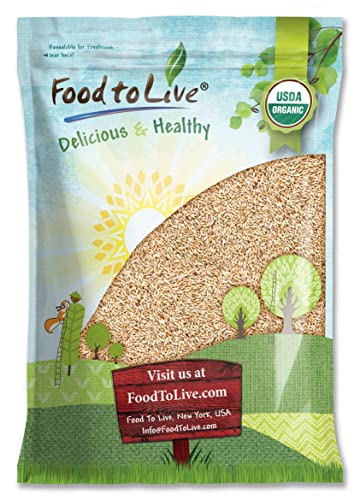
Food to Live Organic Rye Berries, available on Amazon
You can also buy kosher and organic-certified rye berries from Food to Live in 10-pound bags on Amazon. The brand also sells bags in other sizes, ranging from 1-pound bags to 20-pound bags.
For a more complete list of online whole grain sources, check out our companion article, The Whole Grain Purchasing Guide.
Grist to the Mill
Manual, electric, or convertible, a good grain mill will provide you with a steady supply of fresh flour with all the nutrients intact.

Before purchasing, decide what type of flour and meal textures will best suit your needs, and whether you’d like the ability to grind oily products for butters, like nuts and seeds.
Remember to look for high-quality burrs or grinding plates, as these are the mechanisms that will be doing all the work! And for the best freshness and nutrition, grind only what you’ll use in the short term – whole grain kernels store much better than processed flour.
Follow our guidelines to ensure you get a reliable and durable model that will meet your specific needs, and check out our individual reviews of the best grain mills available for the home market.
Do you readers have any comments or questions about any of these mills we reviewed? Drop us a note in the comments below!
If you are looking for other appliances that can help you run a more efficient kitchen and household, we have more for you to consider. You might want to make some room for the following appliances, as detailed in our reviews:
© Ask the Experts, LLC. ALL RIGHTS RESERVED. See our TOS for more details. Originally published on January 2, 2020. Last updated on May 2, 2023. Product photos via Amazon, Lehman’s, KitchenAid, Vitamix, and Wayfair. Uncredited photos via Shutterstock. With additional writing and editing by Nikki Cervone.
About Lorna Kring
Recently retired as a costume specialist in the TV and film industry, Lorna now enjoys blogging on contemporary lifestyle themes. A bit daft about the garden, she’s particularly obsessed with organic tomatoes and herbs, and delights in breaking bread with family and friends.


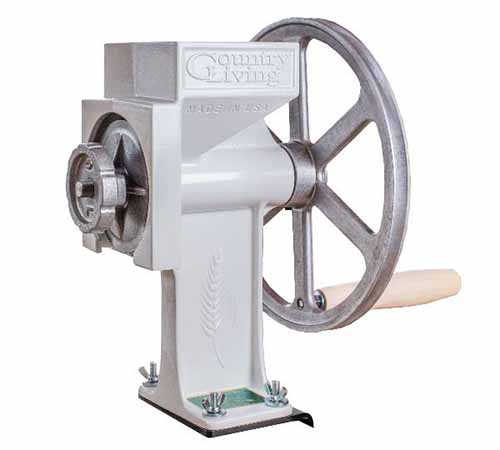
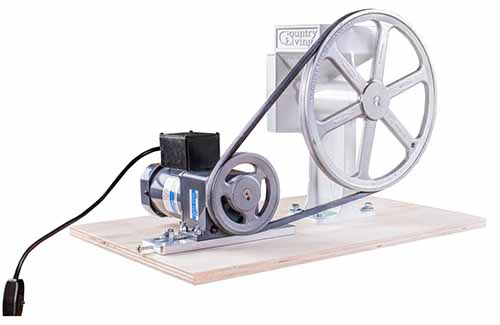

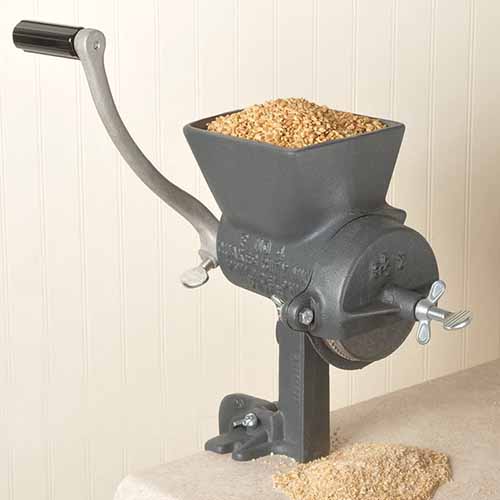
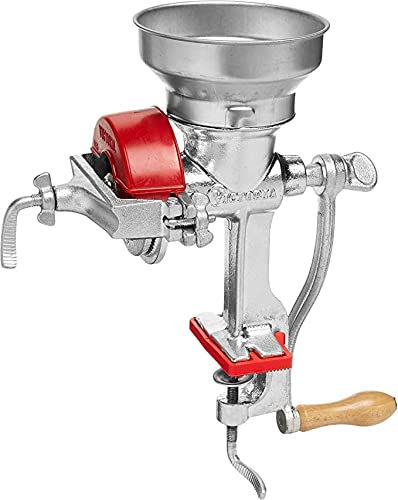
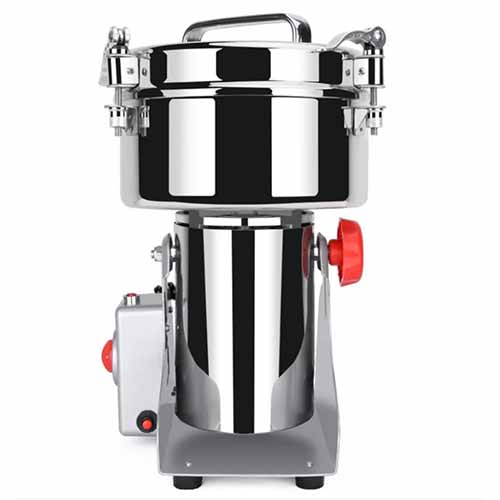
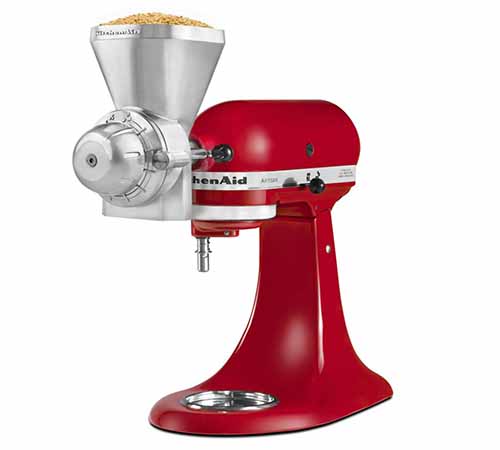
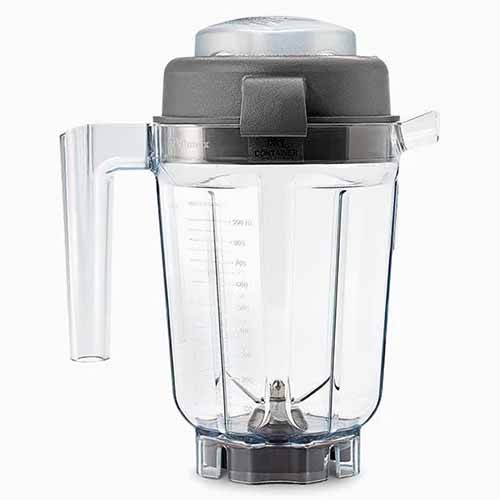
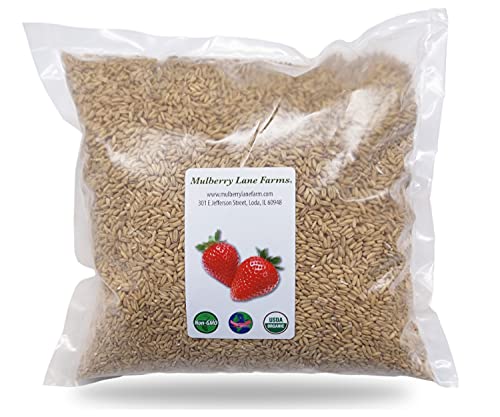
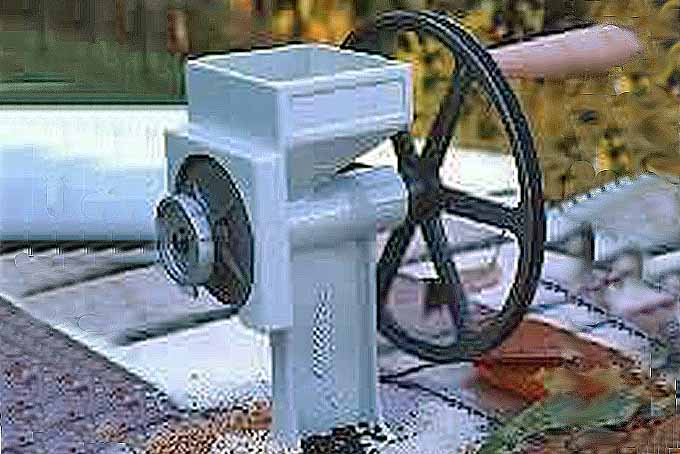
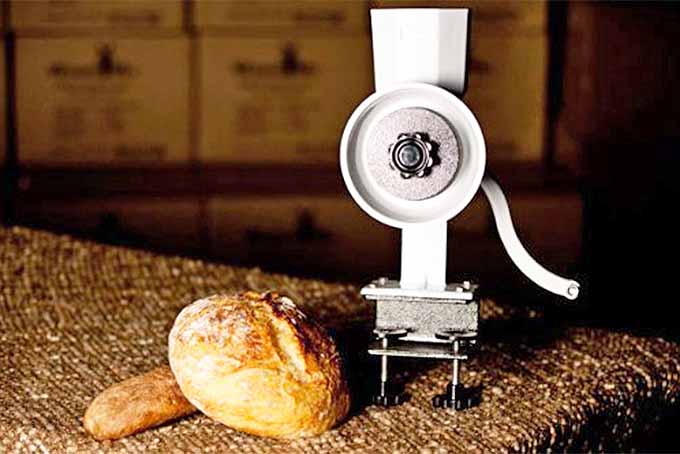
Thank you
I have a hand crank FLOUR mill or grinder. The base is cast-iron and the handle cast iron with wood. The mill part is stainless steel . We bought it in 1973, it’s made in Poland. I’m trying to sell it, was curious what it might be worth, would appreciate any help. Thank you Catherine
do you have a picture of this grinder?
Hi Catherine,
I may buy it if it is in good working order and if the asking price and postage will be reasonable. Let me know the total cost to send to Australia.
Hello, I have an old stone flour mill that I’ve had since the 1960s and it needs new grinding stones. At least I think so, because it leaves “gravels” in the flour. Can you help me find a source of grinding stones?
Did you find a good stone mill you were looking for?
Which model of mill do you recommend for pecan flour? I am using a food processor and sifter currently.
Great detailed review. Have you considered adding the Waldner grain mills and the Mockmill range?
My mom has a flour mill her neighbor gave her. There was no owner’s manual with it when it was given to her. The name of the mill is GRIND ALL Model # 75, serial # 01760112. There is a P.O. Box # on the bottom is in Provo, Utah. Who can contact for an owners manual for said item?
Thanks or reading out, Lynne! Is this a relatively new mill, or an antique? I was able to find a vintage grain mill called the All-Grain Co. Flour Mill online (Model A-33), and this company was based in Utah but in a different city called Tremonton. I wonder if there might be a connection there? Otherwise, the search continues. Sorry we weren’t able to help more! Maybe a reader will have some suggestions for you.
Can I use a grain mill to dehull sunflower seeds and pumpkin seeds?
Which grain mill grinds the finest flour? I want to grind rice to super ultra fine level.
If you have ever had (or made) “Cream of Rice”, then that is the size I am looking for. I don’t know, is there a specific “term” or “size” for that? Or is that what they call “cereal”?
Currently, I put the whole rice in a Magic Bullet to do the initial breaking up. Then I finish with an old burr grinder, made for spices (holds about 1 Tbsp of rice at a time). It is a sad case of “grind until you die!” So I need to find a better way. And knowing what to call that size would be a big help.
Thanks in advance.
I bought a Victoria mill. It has white cast iron plates- very wear resistant. I ground them flat so the cutting grooves diminish to zero depth about one eighth of an inch before the outside diameter. The plates are pressed together tightly. It is driven at about 300 rpm with a powerful electric drill. The sharp edges of the grooves, high pressure holding the plates together and large driving power are the necessary elements for grinding fine flour at a rate of a few to several cups per minute. Andy